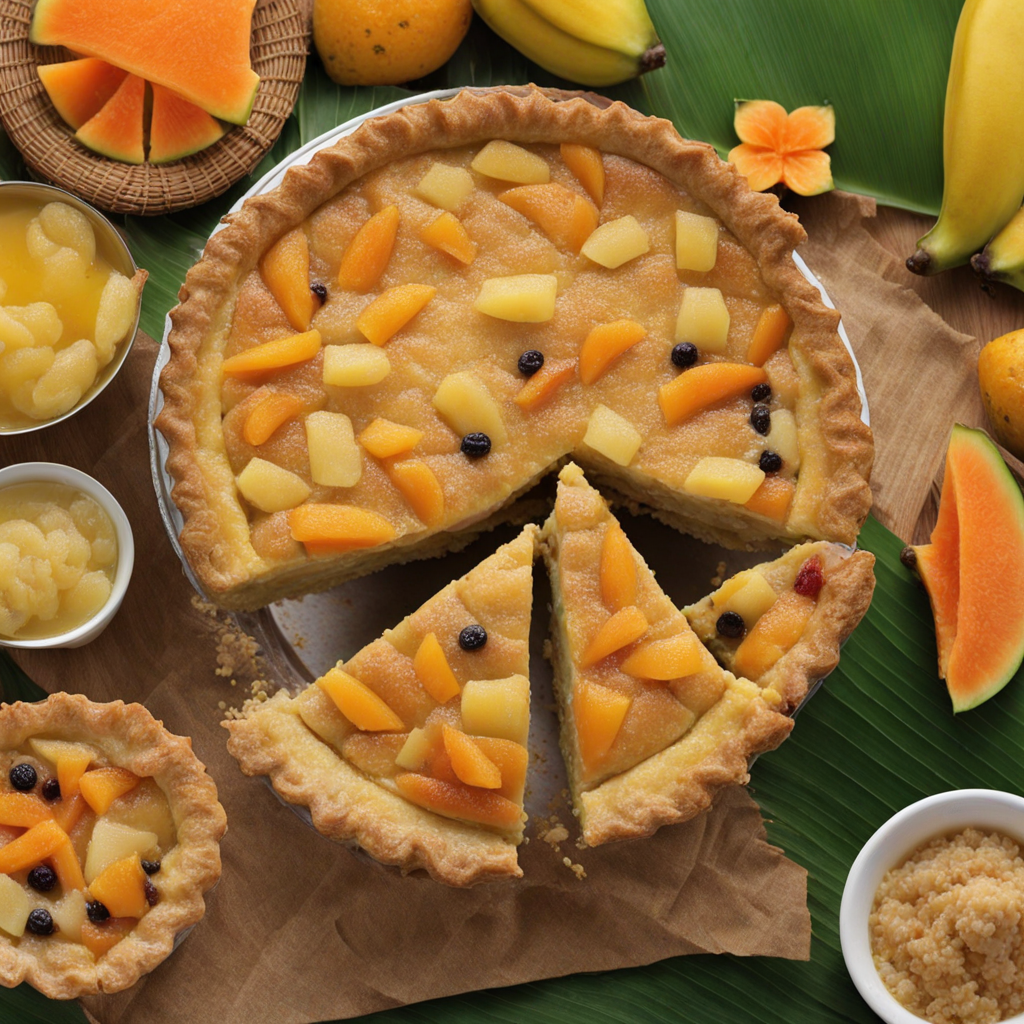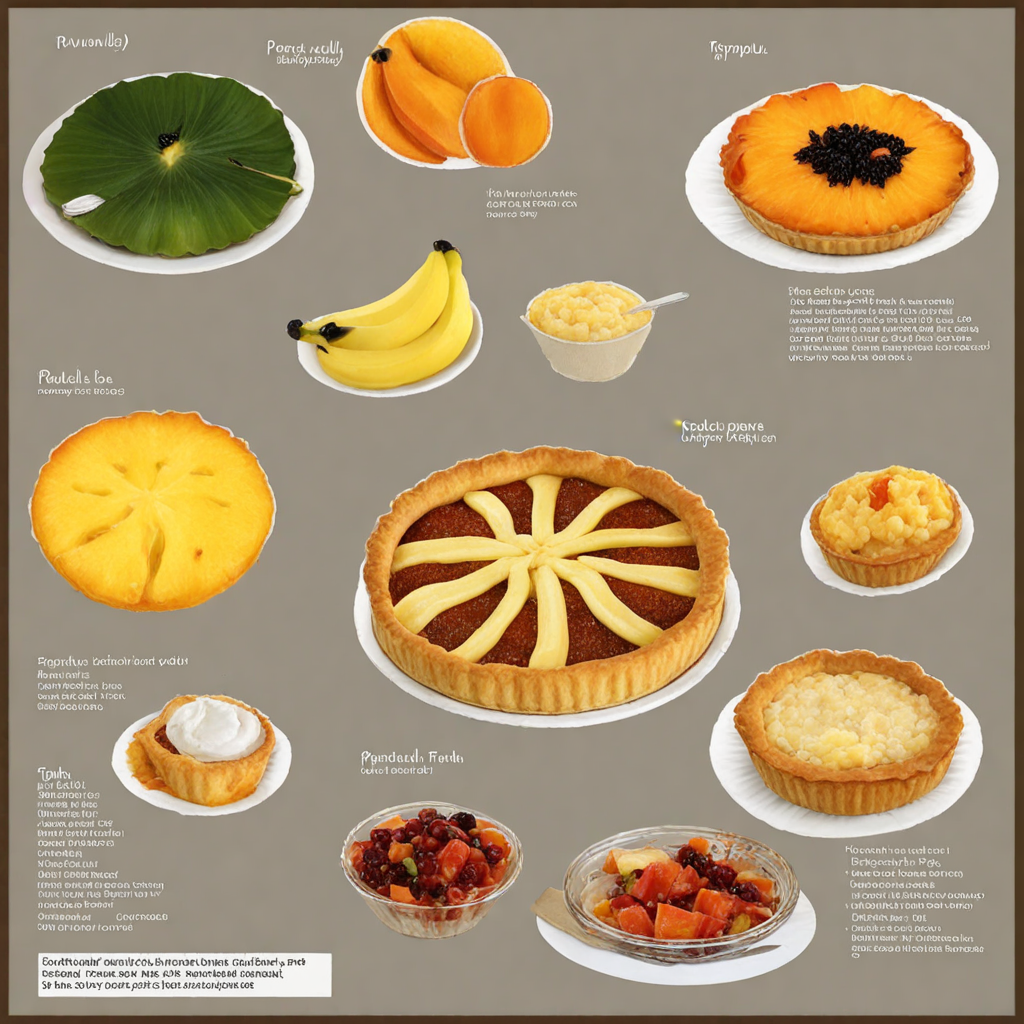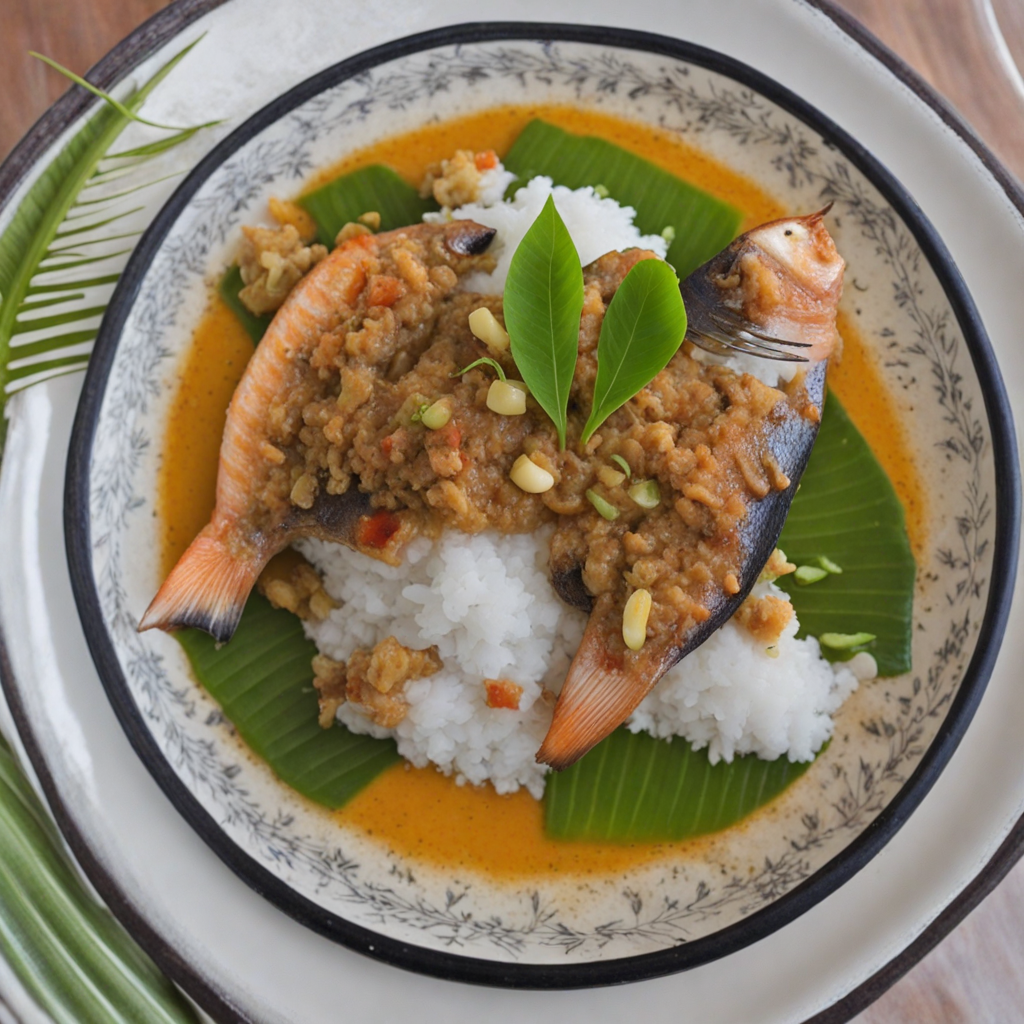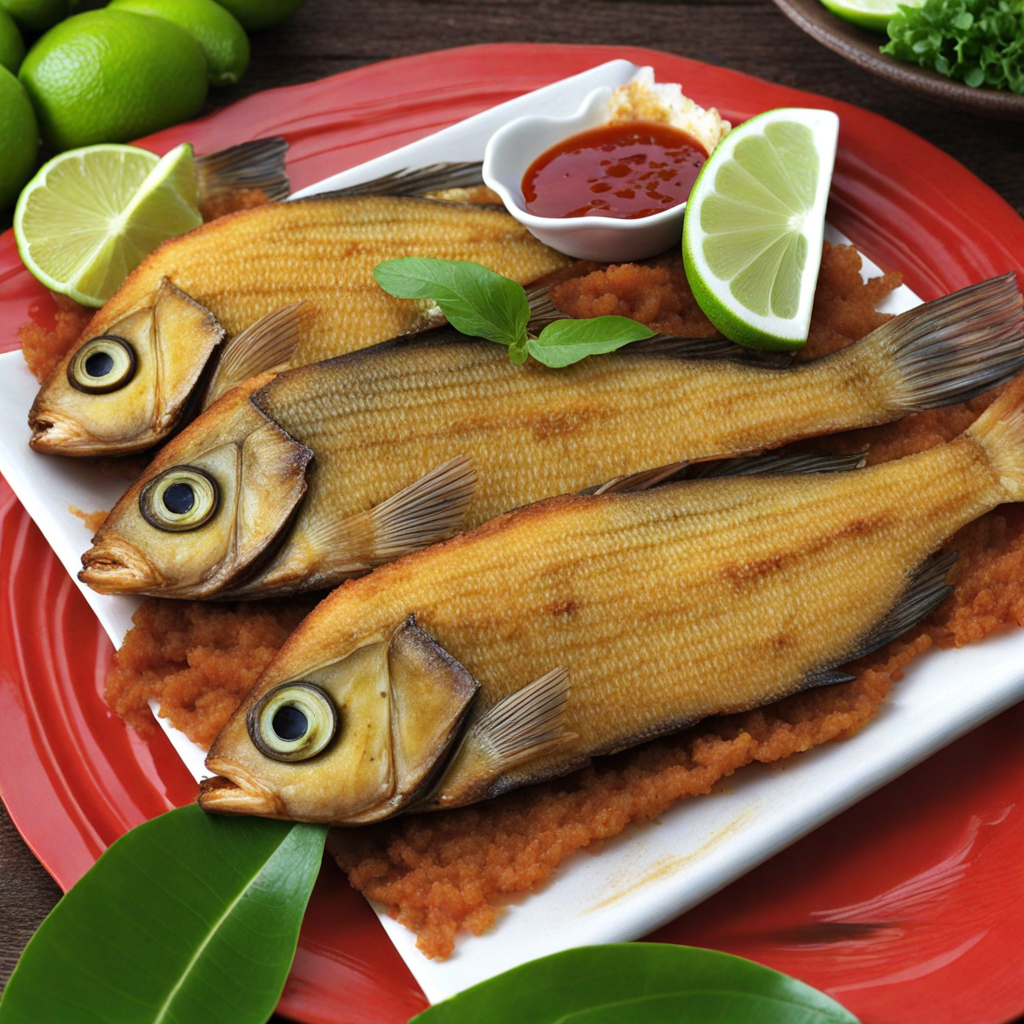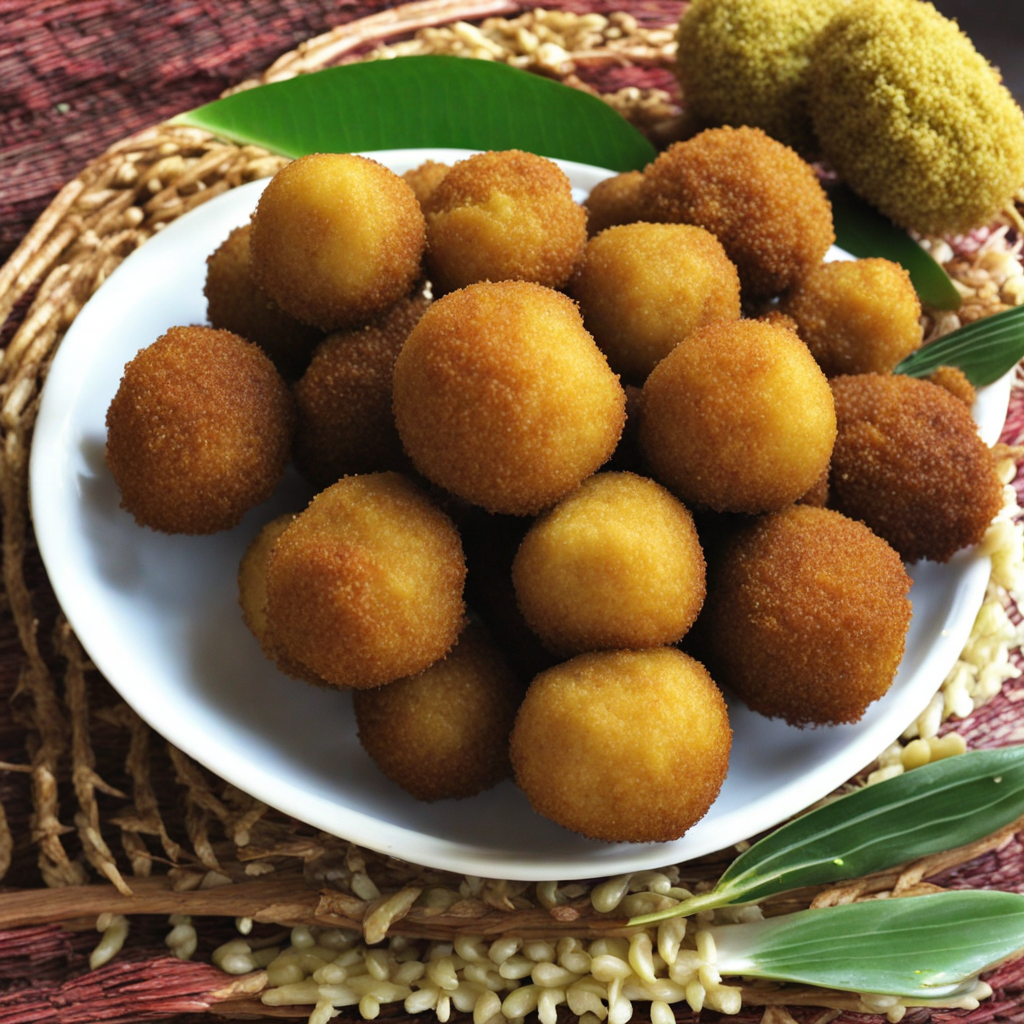Tuvalu Pie
Tuvalu Pie is a delightful culinary creation that embodies the essence of the Tuvaluan islands, infusing tropical flavors with a comforting, homestyle approach. This pie features a flaky, buttery crust that cradles a rich filling made from fresh, local ingredients. At the heart of the pie is a combination of sweet taro and creamy coconut, which provides a unique balance of sweetness and richness. The natural sweetness of the taro is complemented by the subtle, nutty flavor of coconut milk, creating a harmonious blend that transports your palate to the sun-kissed shores of Tuvalu. The filling is often enhanced with a hint of vanilla and a sprinkle of nutmeg, adding layers of flavor that elevate the overall taste experience. Some variations may include a touch of fresh mango or pineapple, introducing a burst of tropical zest that brightens the earthy notes of the taro. The pie is typically baked to golden perfection, allowing the crust to develop a crisp exterior while maintaining a tender, melt-in-your-mouth texture inside. Each bite is a celebration of the vibrant produce that thrives in Tuvalu's fertile soil and bountiful waters. Served warm or at room temperature, Tuvalu Pie is perfect for any occasion, whether as a dessert or a sweet treat to accompany a cup of tea. The combination of flavors and textures is not only comforting but also a reflection of the island's rich cultural heritage. Sharing a slice of this pie is more than just enjoying a tasty dish; it's an invitation to experience the warmth of Tuvaluan hospitality and the beauty of its culinary traditions. Each bite offers a taste of paradise, making Tuvalu Pie an irresistible choice for adventurous food lovers seeking something new and extraordinary.
How It Became This Dish
The History of Pai Tuvalu: A Culinary Gem of the Pacific #### Origins of Pai Tuvalu Pai Tuvalu, a traditional dish from the small island nation of Tuvalu, is a delightful representation of the rich culinary heritage of the Pacific Islands. Tuvalu, comprising nine islands scattered in the Pacific Ocean, has a distinct cultural identity shaped by its geography, climate, and history. The islands were first settled by Polynesian navigators over a thousand years ago, who brought with them their agricultural practices, fishing techniques, and culinary traditions. Among these early settlers, root crops, particularly taro and cassava, became staples. The name "Pai" refers to a traditional preparation method, which involves baking or steaming, while "Tuvalu" denotes its geographic and cultural roots. Pai itself can be made with various ingredients, but it is most commonly associated with taro and coconut, key components that reflect the island's tropical environment. Taro (Colocasia esculenta) is not only a staple food in Tuvalu but also holds significant cultural importance; it is often featured in traditional ceremonies and celebrations. #### Cultural Significance Pai Tuvalu is more than just a dish; it embodies the communal spirit and cultural practices of the Tuvaluan people. Food in Tuvalu is deeply interwoven with identity and tradition. The preparation and consumption of Pai often occur during communal gatherings, celebrations, and important life events such as weddings, births, and funerals. These occasions serve as opportunities for families and communities to come together, share stories, and strengthen bonds. The dish is emblematic of Tuvalu's cultural values, which emphasize sharing, hospitality, and the importance of family. When making Pai, families often gather to prepare the ingredients, with younger generations learning the techniques and stories behind their culinary heritage. This oral transmission of knowledge is vital in a society where traditional practices are increasingly at risk due to modernization and globalization. #### Ingredients and Preparation The basic ingredients of Pai Tuvalu typically include taro, coconut cream, and sometimes sugar or pandan leaves for added flavor. Taro is peeled, grated, and then mixed with coconut cream to create a rich, creamy base. The mixture is then poured into a baking dish or wrapped in banana leaves, which adds a subtle flavor and aids in steaming. It is then cooked in an underground oven or an improvised earth oven, where hot stones heat the food from below, allowing for a unique flavor profile that is characteristic of many traditional Pacific Island dishes. Variations of Pai Tuvalu may also include the use of sweet potatoes or bananas, demonstrating the adaptability of the dish to local resources. Each island may have its own unique twist on the recipe, influenced by available ingredients and family traditions. This diversity reflects the broader culinary practices of the Pacific Islands, where local ingredients and cultural exchanges shape the food landscape. #### Development Over Time Historically, the food landscape of Tuvalu has been shaped by its isolation and limited agricultural opportunities. The islands are small, with limited arable land, which has necessitated a diet that relies heavily on what can be grown in challenging conditions. As a result, dishes like Pai Tuvalu have evolved to use native plants that thrive in the local environment. In the 19th and 20th centuries, European contact introduced new ingredients and cooking techniques to Tuvalu, but traditional dishes like Pai have remained resilient. The arrival of missionaries and traders brought changes not only to the economy but also to culinary practices, with Western foods gradually influencing local diets. However, Pai Tuvalu has retained its place as a cherished traditional food, serving as a reminder of Tuvalu's cultural roots amidst this change. The 20th century also saw increased migration of Tuvaluans to other countries, particularly New Zealand and Australia, in search of better economic opportunities. This diaspora has allowed for the introduction of Pai Tuvalu to new audiences, fostering a greater appreciation for Tuvaluan cuisine while also influencing how the dish is prepared and consumed in different contexts. In urban settings, Pai may be cooked in modern kitchens with contemporary appliances, yet the essence of the dish remains rooted in traditional practices. #### Contemporary Relevance Today, Pai Tuvalu holds a special place in the hearts of Tuvaluans, both at home and abroad. It is not only a symbol of national pride but also a means of cultural preservation. The resurgence of interest in traditional foods around the world has encouraged Tuvaluans to reclaim and celebrate their culinary heritage. Efforts to promote local cuisine have been bolstered by community events, cooking classes, and cultural festivals that highlight the importance of traditional dishes like Pai. In recent years, concerns about climate change have prompted discussions about food security and sustainability in Tuvalu. As rising sea levels threaten arable land and traditional farming practices, the need to preserve and promote local foods becomes ever more critical. Pai Tuvalu serves as both a symbol of resilience and a call to action, reminding the Tuvaluan community of the importance of their culinary heritage in the face of modern challenges. #### Conclusion The history of Pai Tuvalu is a rich tapestry that weaves together the threads of tradition, community, and cultural identity. From its origins in ancient Polynesian practices to its contemporary role in Tuvaluan society, Pai Tuvalu reflects the resilience of a people deeply connected to their land and heritage. As Tuvalu faces the challenges of the 21st century, dishes like Pai not only nourish the body but also feed the spirit, reminding future generations of the importance of their culinary roots and the stories that accompany them. In a world increasingly influenced by globalization, the preservation of traditional foods like Pai Tuvalu is essential for maintaining the cultural diversity that enriches our shared human experience.
You may like
Discover local flavors from Tuvalu


